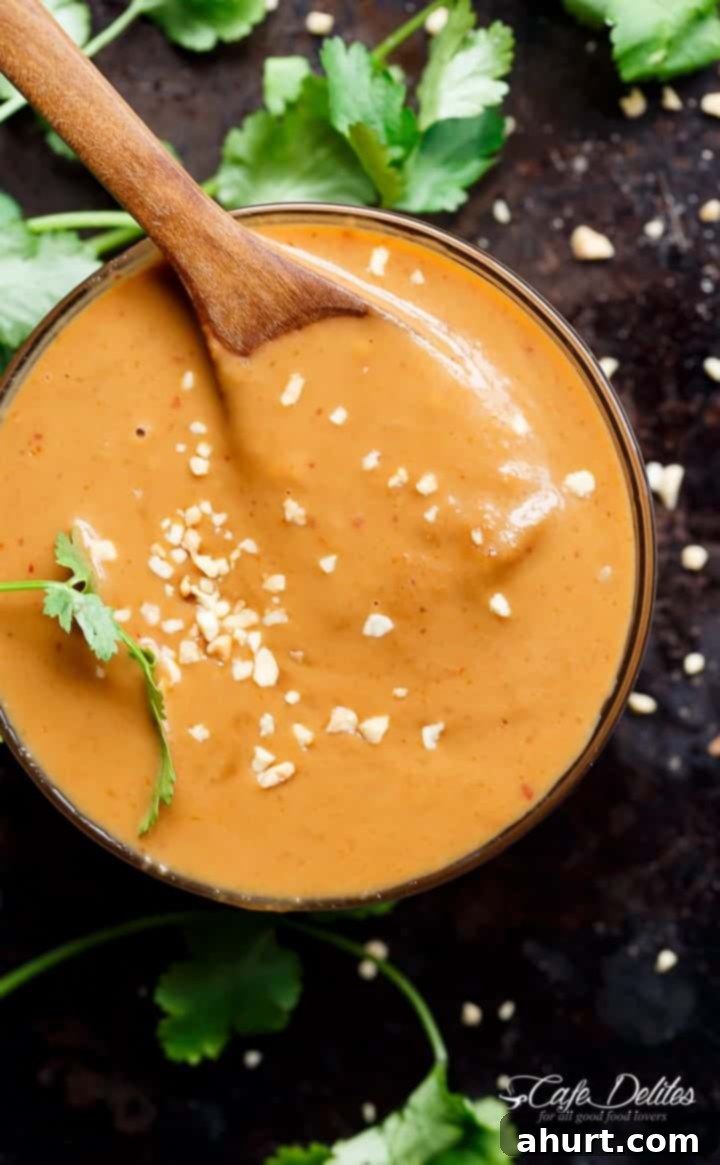Easy Homemade Satay Sauce: Your Ultimate Guide to Authentic Peanut Flavor in Minutes
Unleash the irresistible flavors of Southeast Asia right in your kitchen with this incredibly easy Satay Sauce recipe. Rich, creamy, and bursting with nutty goodness, this homemade peanut sauce comes together in under 5 minutes using simple pantry ingredients. Forget bland, store-bought versions – our recipe delivers that perfect balance of sweet, salty, tangy, and subtly spicy notes that you know and love from authentic satay. It’s the ultimate dipping sauce or versatile condiment, transforming everything from grilled chicken skewers and succulent beef to fresh seafood and roasted vegetables into an instant culinary delight.
The biggest challenge you’ll face? Resisting the urge to spoon it directly from the pan! This peanut satay sauce is so deliciously addictive, you’ll find yourself “taste-testing” a little too often, only to wonder where half of it vanished. Whether you serve it as a vibrant satay dipping sauce alongside your favorite appetizers or generously drizzle it over main courses, get ready to be completely hooked. Its velvety texture and complex flavor profile make it a must-have in your recipe repertoire.
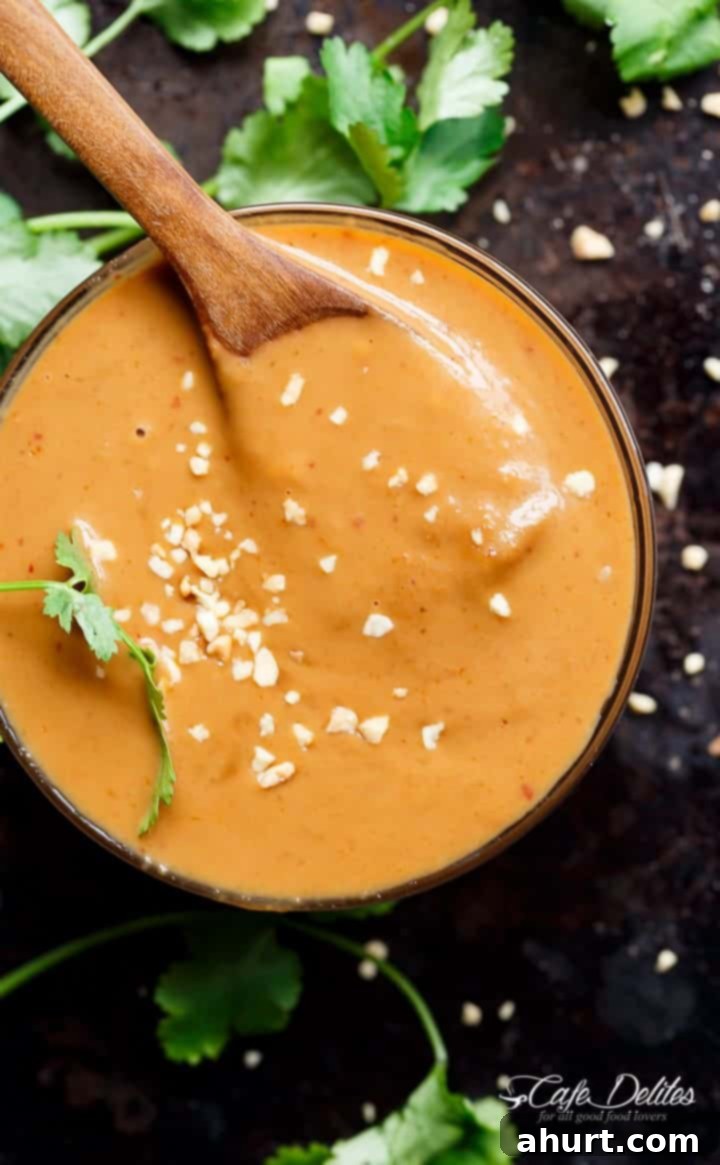
What Makes This Quick Satay Sauce So Irresistible?
This satay sauce recipe stands out for its incredible depth of flavor and effortless preparation. In just a few minutes, you can create a condiment that tastes like it simmered for hours. The secret lies in a harmonious blend of simple ingredients that create a truly balanced experience:
- Creamy Peanut Butter: Forms the luxurious, nutty foundation, providing a rich and satisfying texture.
- Savory Soy Sauce (Kecap Manis and Fish Sauce): Adds an essential layer of umami and a unique sweet-savory depth characteristic of authentic Indonesian and Malaysian cuisine.
- Rich Coconut Milk: Contributes a silky, velvety smoothness and a subtle sweetness that perfectly mellows the other intense flavors.
- A Hint of Heat (Thai Red Curry Paste): Infuses the sauce with aromatic spices and a gentle warmth, allowing the flavors to truly bloom without overpowering your palate.
- Bright Citrus (Lime Juice): A squeeze of fresh lime juice is the finishing touch, cutting through the richness and adding a vibrant, tangy zest that elevates every single bite.
Whether you’re looking for a robust satay dipping sauce for your skewers or a flavorful dressing to transform weeknight meals, this peanut satay sauce instantly elevates any dish with its smooth consistency and captivating taste. It’s a game-changer for anyone who loves bold, exotic flavors without the culinary fuss.
Essential Ingredients for the Best Homemade Satay Sauce
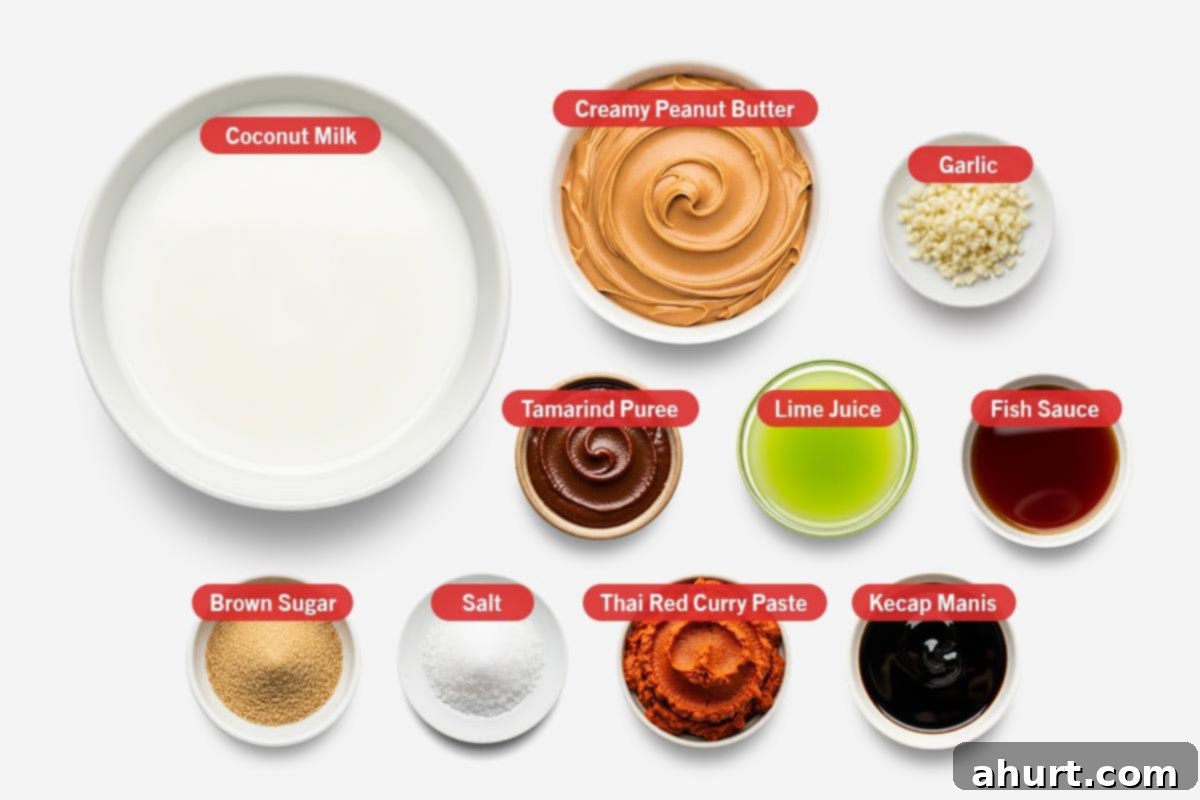
Crafting this restaurant-quality satay sauce at home is surprisingly simple, relying on a blend of accessible pantry staples and key Asian condiments. Each ingredient plays a vital role in building the sauce’s signature bold and complex flavor profile:
- Coconut Milk: This is crucial for achieving that desirable creamy texture and adding a subtle, natural sweetness. It also helps to balance the richer, more intense flavors. Opt for full-fat coconut milk for the richest, most authentic result, but light coconut milk can be used for a lighter option.
- Creamy Peanut Butter: The undisputed star of any peanut satay sauce! Choose a smooth, all-natural creamy peanut butter without added sugars or hydrogenated oils for the best flavor and texture. This forms the backbone of the sauce, providing its signature nutty richness.
- Kecap Manis: This Indonesian sweet soy sauce is a game-changer. Thicker and sweeter than regular soy sauce, it adds a unique caramel-like depth and glossy finish that is essential for an authentic satay flavor. If you can’t find it, you can substitute with regular soy sauce mixed with a touch of brown sugar and a splash of molasses.
- Thai Red Curry Paste: Don’t let the name fool you – this paste isn’t just for curries. It’s packed with aromatic spices like chili, lemongrass, galangal, and kaffir lime, delivering gentle heat and that unmistakable fragrant warmth that defines satay. Adjust the amount to control the spice level.
- Brown Sugar: Provides sweetness to balance the savory and spicy elements, enhancing the overall richness and helping to caramelize the sauce slightly during simmering.
- Fish Sauce: (Optional, but highly recommended) A little goes a long way! Fish sauce adds a profound umami depth that is characteristic of Southeast Asian cuisine. If you prefer a vegetarian or vegan option, or simply don’t have it, you can replace it with extra soy sauce.
- Tamarind Puree: (Optional) This adds a crucial tangy, slightly sour note that brightens the sauce and prevents it from being overly rich. It’s a classic component in many Asian sauces. If omitted, you might add a bit more lime juice for tang.
- Minced Garlic: Fresh garlic provides an aromatic foundation, infusing the sauce with its pungent, savory essence.
- Lime Juice: Freshly squeezed lime juice is added at the end to provide a final burst of bright acidity, cutting through the richness and perfectly balancing the sweet, savory, and spicy flavors.
- Salt: Essential for seasoning and bringing all the flavors into harmony.
Note: Please refer to the recipe card at the bottom for a precise list of ingredients with exact measurements.
How To Make the Perfect Homemade Satay Dipping Sauce
Creating this flavorful satay sauce is incredibly straightforward, involving just a few simple steps. You’ll be amazed at how quickly you can achieve such a rich and complex flavor!
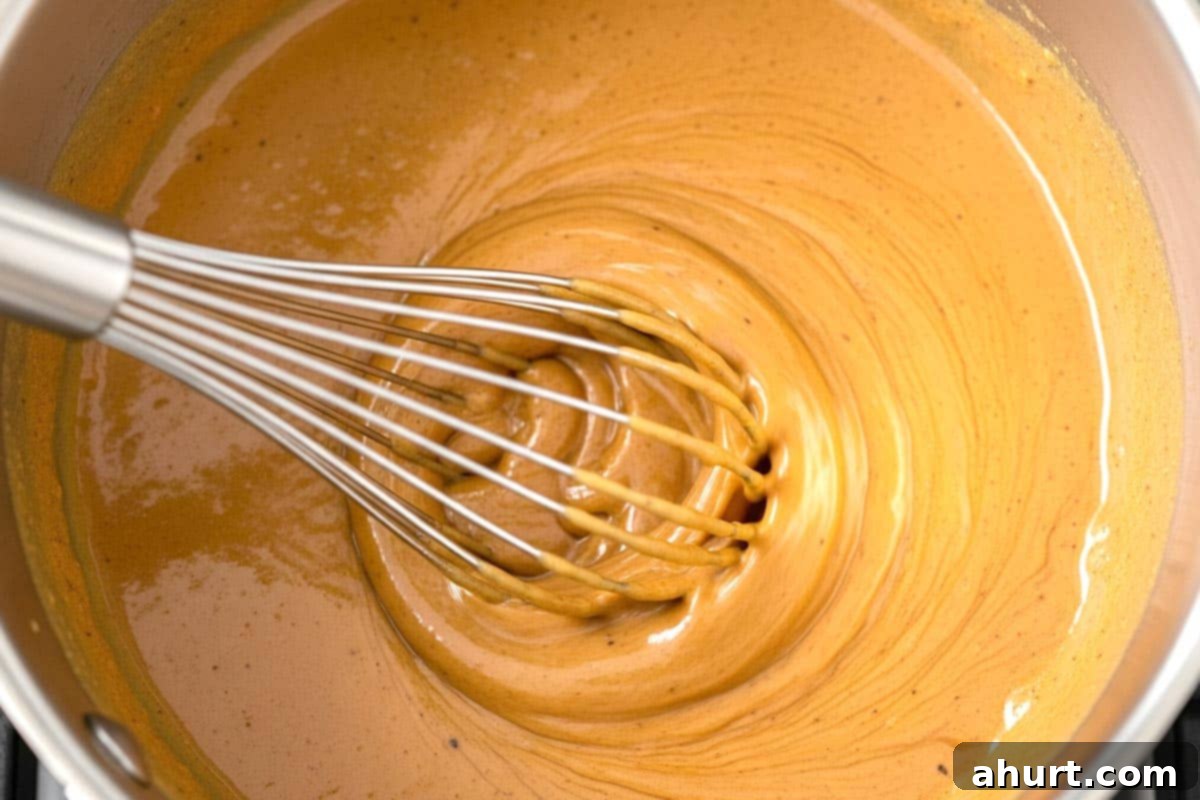
- Combine Ingredients: In a medium-sized saucepan, add the coconut milk, creamy peanut butter, Kecap Manis, brown sugar, Thai red curry paste, fish sauce (if using), tamarind puree (if using), salt, and minced garlic. Whisk all ingredients thoroughly until the mixture is completely smooth and free of any lumps. This ensures a beautifully consistent sauce.
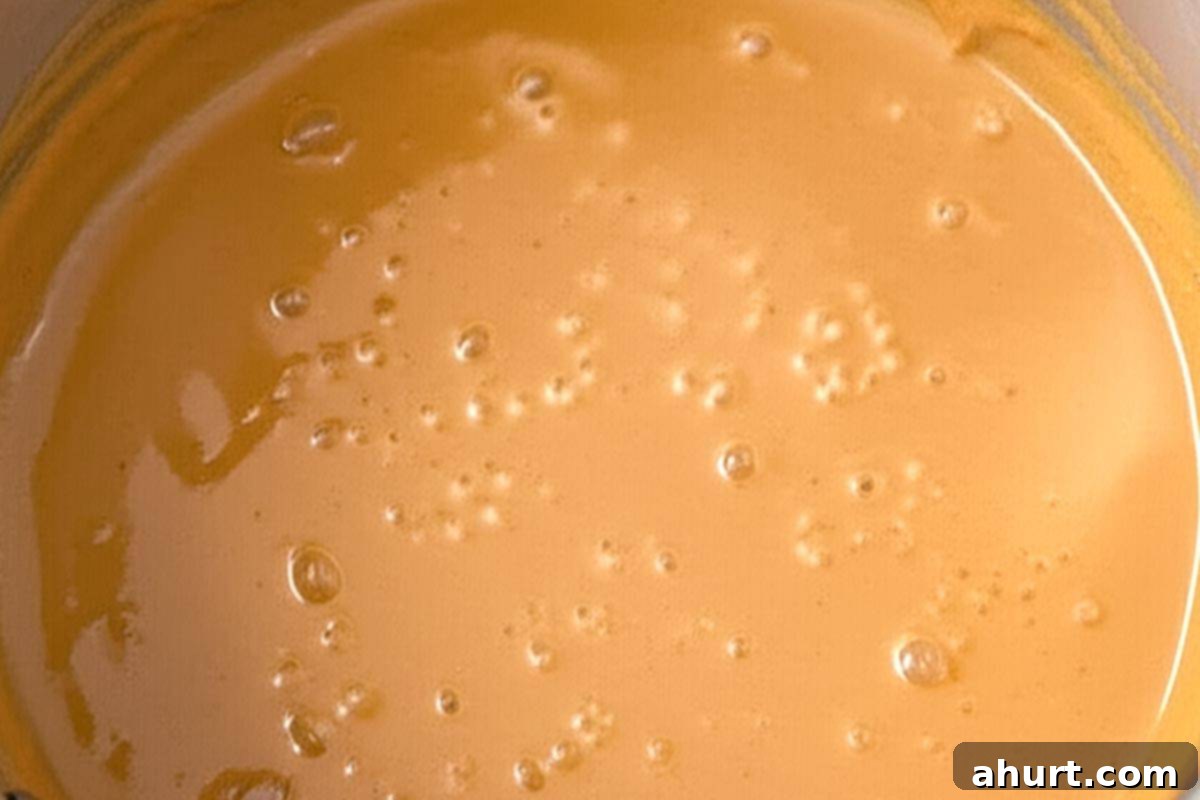
- Simmer Until Thick: Place the saucepan over medium heat. Bring the mixture to a gentle boil, then immediately reduce the heat to low. Allow the sauce to simmer, stirring frequently, for about 5 to 6 minutes. During this time, the flavors will meld beautifully, and the sauce will thicken into a rich, glossy, and velvety consistency. Stirring prevents the peanut butter from sticking to the bottom and burning.
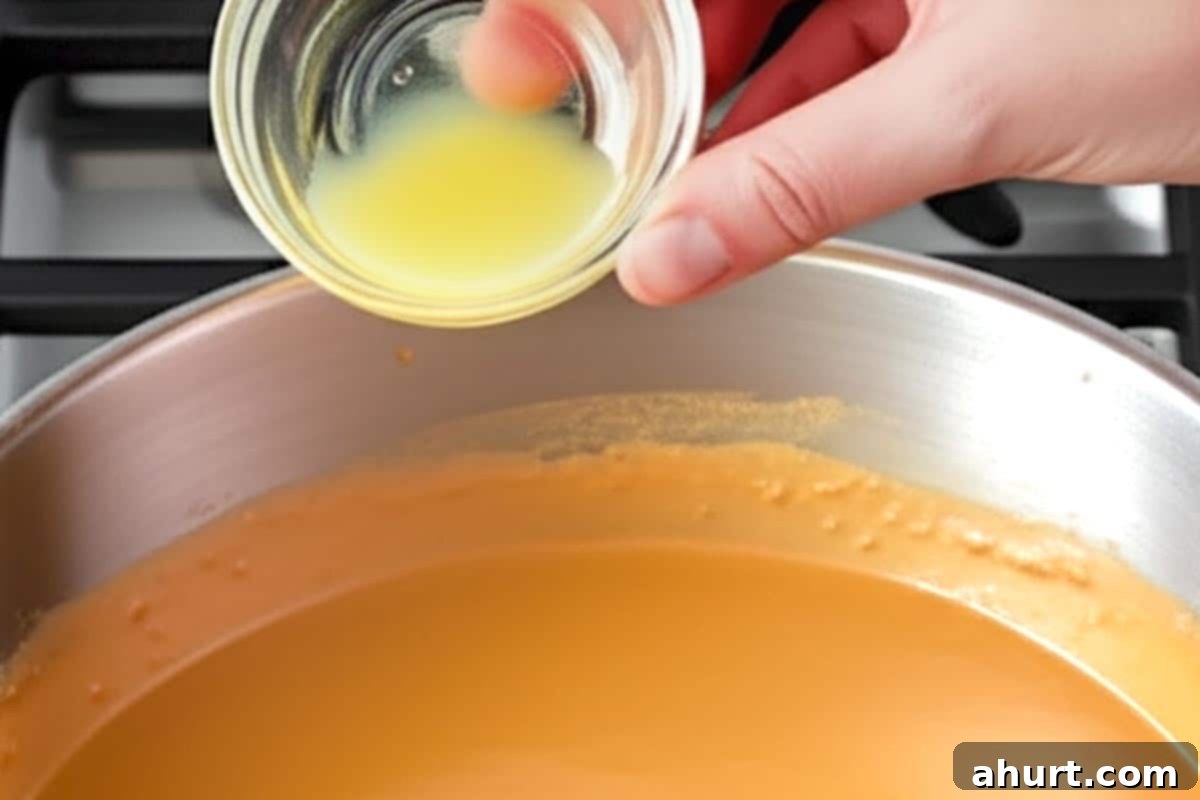
- Finish With Lime: Once the sauce has thickened, remove the saucepan from the heat. Stir in 1 tablespoon of freshly squeezed lime juice. Taste the sauce, and if you desire more brightness or a sharper tang to balance the sweetness and heat, add the second tablespoon of lime juice. Adjust to your personal preference. This final touch of acidity is key to a well-rounded satay flavor.
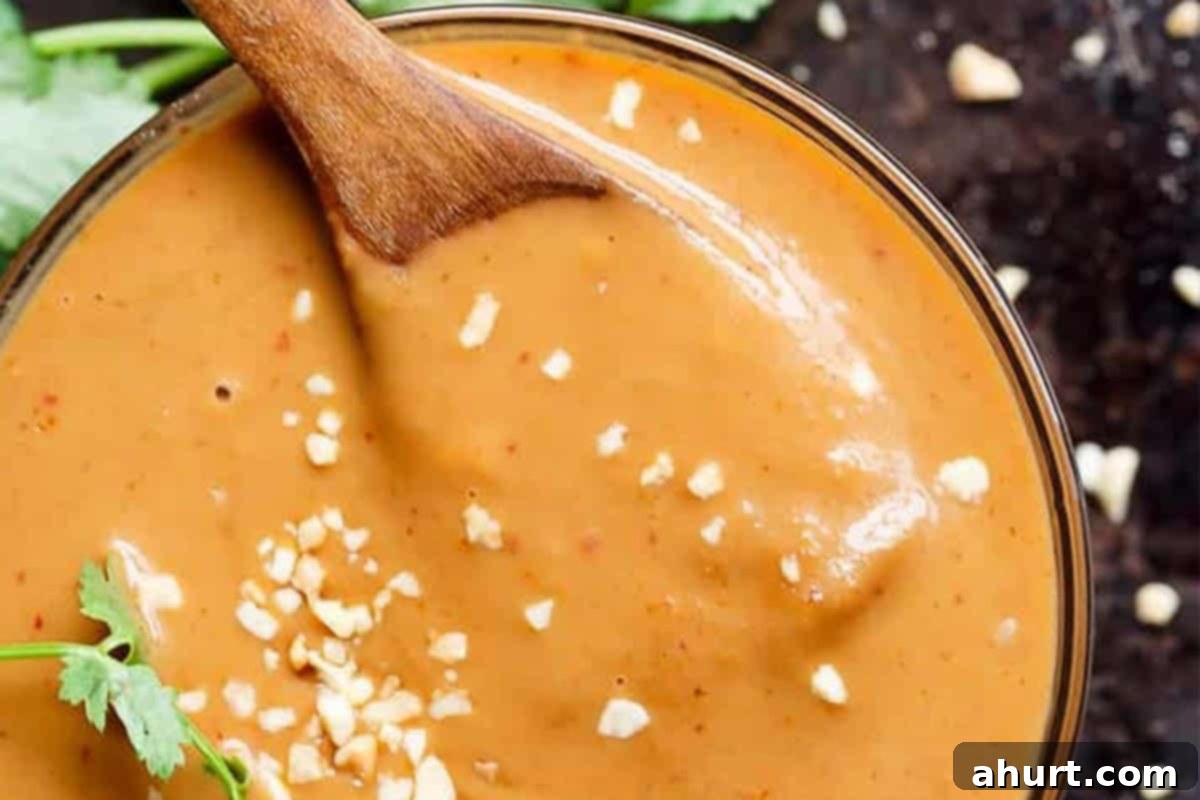
- Serve Warm: Your homemade satay sauce is best served warm. It makes an incredible dipping sauce for grilled chicken, shrimp, beef, or pork skewers. Alternatively, drizzle it generously over stir-fried noodles, rice bowls, or steamed vegetables for an instant flavor upgrade. If the sauce thickens too much upon cooling, simply whisk in a splash of warm water or additional coconut milk until it reaches your desired consistency.
Versatile Serving Suggestions for Your Peanut Satay Sauce
The beauty of this easy satay sauce lies in its incredible versatility. Beyond the classic chicken satay skewers, there are countless ways to enjoy its rich, nutty flavor:
- Classic Dipping: Serve it alongside any grilled or pan-fried protein. It’s phenomenal with chicken, beef, or pork skewers (like Crispy Oven Fried Beer Batter Crumbed Shrimp), spring rolls, fresh Vietnamese rolls, or even a simple platter of raw vegetables.
- Noodle & Rice Bowls: Drizzle it over stir-fried noodles, pad Thai, or Singapore Zoodle Stir Fry With Chicken. It also makes a fantastic addition to rice bowls with your favorite protein and veggies.
- Salad Dressing: Thin it slightly with a little warm water or extra coconut milk, and use it as a creamy, flavorful dressing for green salads, pasta salads, or even a vibrant Cilantro Lime Chicken Salad + Mango Avocado Salsa.
- Marinade: Use it as a marinade for chicken, pork, or tofu before grilling or baking to infuse your protein with deep, aromatic flavors.
- Sandwiches & Wraps: Spread a thin layer on bread or tortillas for an exotic twist to your sandwiches or wraps.
- Roasted Vegetables: Toss roasted broccoli, cauliflower, sweet potatoes, or Brussels sprouts in this sauce for an elevated side dish.
- Pizza Base: For an adventurous meal, use it as a base for a Thai-inspired chicken pizza!
No matter how you choose to enjoy it, this homemade satay sauce is guaranteed to add an explosion of flavor to your culinary creations.
Satay Sauce Recipe FAQs
Traditionally, yes, peanuts are the defining ingredient that gives satay dipping sauce its signature nutty flavor and creamy texture. However, for those with peanut allergies, you can successfully substitute peanut butter with other creamy nut butters like almond butter or cashew butter. For a nut-free option, sunflower seed butter (SunButter) works well, though the flavor profile will differ slightly. Always check labels to ensure no cross-contamination if allergies are severe.
If you prefer a bolder kick, there are several ways to increase the heat. You can add extra Thai red curry paste during the simmering stage. For an immediate boost of spice without altering the sauce’s texture, stir in some sriracha or a pinch of red chili flakes at the end. Freshly chopped bird’s eye chilies can also be added for a vibrant, intense heat, sautéing them briefly with garlic before adding other ingredients.
Satay sauce naturally thickens as it cools due to the peanut butter and coconut milk. If you find your sauce is too thick for your liking, simply whisk in a little warm water or extra coconut milk, one tablespoon at a time, until you reach your desired creamy consistency. If reheating, you might need to add a splash of liquid again to bring it back to its original texture.
Your homemade satay sauce can be stored in an airtight container in the refrigerator for up to 5-7 days. For longer storage, it freezes beautifully. Simply pour it into a freezer-safe container or individual portions and freeze for up to 3 months. Thaw overnight in the refrigerator and whisk well before reheating. You may need to add a little water or coconut milk to thin it down again after thawing and reheating.
Absolutely! This recipe is very close to being naturally vegan. The main non-vegan ingredient is fish sauce. To make it completely vegan, simply omit the fish sauce and replace it with an equal amount of regular soy sauce or a good quality tamari (for a gluten-free option). Ensure your red curry paste is also vegan, as some brands may contain shrimp paste.
For the most authentic and best-tasting satay sauce, opt for a creamy, all-natural peanut butter that contains only peanuts and salt (or very minimal added sugar). Avoid heavily processed peanut butter with hydrogenated oils or excessive added sugars, as these can affect the sauce’s flavor balance and consistency. Smooth peanut butter is preferred for a silky sauce, but if you enjoy a little texture, a small amount of crunchy peanut butter can be used.

Pin
Homemade Satay Dipping Sauce
Ingredients
- 1 2/3 cup coconut milk
- 1/3 cup creamy peanut butter all natural preferable
- 2 tablespoons Kecap Manis sweet soy sauce
- 2 1/2 tablespoons brown sugar packed
- 2 1/4 tablespoons Thai red curry paste
- 2 tablespoons fish sauce optional – replace with soy sauce if desired
- ½ tablespoon Tamarind puree optional
- 1 pinch salt
- 1 teaspoon garlic minced
- 1-2 tablespoons lime juice freshly squeezed, adjust to your tastes
Instructions
-
Combine all ingredients into a medium-sized saucepan EXCEPT for the lime juice. Whisk until smooth to ensure no lumps remain. Bring to a boil over medium heat, then reduce heat to low and allow to simmer, stirring frequently, until the sauce is well combined, glossy, and has thickened slightly (this usually takes about 5-6 minutes).
-
Once thickened, remove the saucepan from the heat. Stir in 1 tablespoon of freshly squeezed lime juice. Taste the sauce and adjust with more lime juice if you prefer a brighter, tangier flavor, or add more brown sugar if it needs a touch more sweetness. Serve warm as a dipping sauce or drizzle generously over chicken, seafood, or beef. Enjoy your homemade satay magic!
Notes
- Nutritional information is calculated using reduced fat coconut milk and ‘light’ peanut butter. Serves 8 (about 1/3 cup per serve). Adjustments for full-fat ingredients will alter the caloric and fat content.
- To store: Keep in an airtight container in the refrigerator for up to 5-7 days. It can also be frozen for up to 3 months. Thaw and reheat gently, adding a splash of water or coconut milk if needed to restore consistency.
- For a richer color and deeper flavor, you can lightly toast the peanut butter in a dry pan for a minute or two before adding other ingredients, being careful not to burn it.
Nutrition
Nutrition information is automatically calculated, so should only be used as an approximation.
